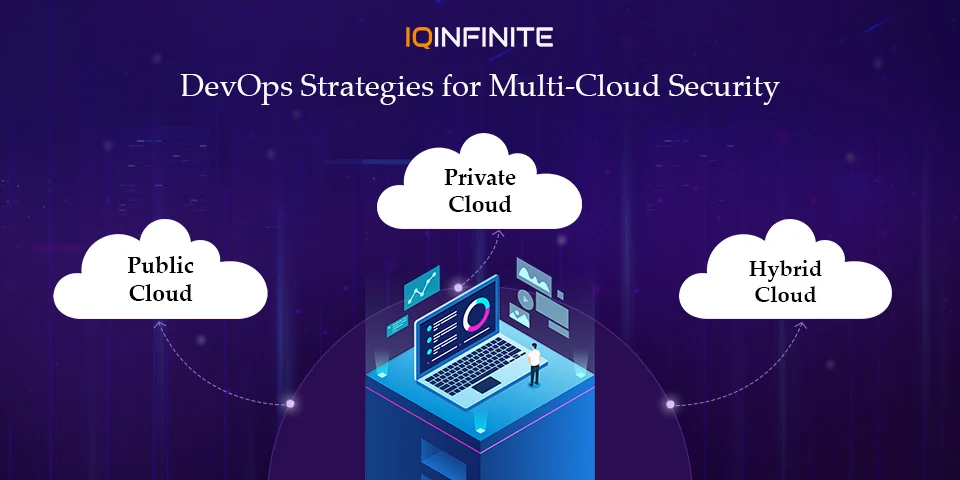Securing Multi-Cloud Environments: DevOps Approaches That Work

In today’s fast‑evolving digital landscape, organisations are no longer relying on a single cloud provider. The multi‑cloud approach leveraging two or more cloud environments (public, private, hybrid) is increasingly common. But with this new flexibility comes new risks, much like unpredictable weather patterns across regions. Traditional security models designed for single‑cloud or on‑premises infrastructure no longer suffice.
In this context, the role of DevOps expands not just delivering features faster but embedding security and resilience into multi‑cloud pipelines. Let’s explore how DevOps teams can secure multi‑cloud environments effectively, by adopting the right practices, tools and mindset.
Why multi‑cloud demands a different security posture
Increased complexity and expanded attack surface
Vendor lock‑in is less acceptable, flexibility is key
Evolving threat landscape and compliance demands
Key DevOps Approaches That Work
1. Infrastructure as Code (IaC) + GitOps for consistency
With multi‑cloud, you want the same baseline definitions applied to AWS, Azure, GCP (and maybe on‑prem). This reduces configuration drift, a major source of mis‑configurations.
Using GitOps workflows (e.g., Argo CD, Flux) gives you version control, audit trails and a declarative deployment model across environments.
Best practice: Include security checks early in IaC - e.g., scanning templates for insecure defaults (open ports, missing encryption) before deployment.
2. Shift‑Left Security & DevSecOps
- Integrating static code analysis, dependency scanning, IaC scanning, configuration checks within CI/CD pipelines.
- Collaboration between development, operations and security teams (DevOps + SecOps = DevSecOps) so security is built‑in, not bolted‑on.
3. Centralised Visibility, Monitoring & Observability
- Use vendor‐agnostic monitoring/observability stacks (e.g., OpenTelemetry, Prometheus + Grafana) so you can ingest telemetry from all clouds.
- Deploy a centralised security posture dashboard (e.g., via a Cloud Native Application Protection Platform (CNAPP)) that shows mis‑configs, threat indicators, compliance across clouds.
4. Zero Trust & Identity‑Centric Security
- Enforce least privilege access across all clouds. Use central identity management (federated identity, single sign‑on) and temporary credentials.
- Segment workloads (micro‑segmentation) so even if one part is compromised, lateral movement is restricted.
5. Automation & Policy‑as‑Code
- Use policy‑as‑code (for example via Open Policy Agent (OPA)) to codify security/compliance policies across clouds.
- Automate incident response: e.g., when a mis‑config is detected, automatically quarantine a workload or revoke credentials. AI‑driven threat detection helps here.
6. Resilience & Disaster Recovery Planning
- Define identical backup and recovery procedures across clouds (data replication, failover pipelines) so that if one region/provider fails, you continue operations.
- Ensure your IaC and deployments are portable: you should be able to redeploy workloads in another cloud with minimal friction.
Implementation Road‑Map: Step by Step
2. Define secure architecture: Decide on your IaC, GitOps, CI/CD frameworks, identity model, monitoring stack.
3. Standardise tooling: Choose IaC tool(s) that support multi‑cloud (Terraform, Pulumi) and ensure modules are reusable.
4. Embed security early: Integrate scanning, policy checks, peer reviews into pipelines.
5. Deploy unified observability & posture platform: Bring logs, metrics, security alerts into one view.
6. Roll out Zero Trust controls: Least privilege, identity federation, micro‑segmentation.
7. Automate guardrails: Create policies as code, automate enforcement and response.
8. Test resilience & multi‑cloud fail‑over: Simulate cloud provider failure, region outage and ensure backup/recovery works.
9. Continuous improvement: Use metrics (MTTR, mis‑configuration rate, security incidents) to refine process.
Challenges & Pitfalls to Avoid
- Tool sprawl: Using too many disparate tools across clouds leads to complexity and blind spots. One practitioner said: > “Each cloud has its own way of doing things… Instead of one clean setup, we’re juggling totally separate environments.”
- Inconsistent policies: If security policies differ between cloud providers, you create weakest‑link risk.
- Lack of visibility: Without unified logs/monitoring, cross‑cloud issues go undetected or are detected too late.
- Cultural disconnect: DevOps, SecOps and CloudOps teams must align; security must be part of the development culture, not an after‑thought.
- Cloud‑specific silos: Relying on native tools per cloud can lead to fragmentation, better to have some “provider‑agnostic” layers.
Looking Ahead
- AI‑driven operations: AI and ML increasingly power security posture analysis, anomaly detection and automated response in multi‑cloud.
- Security Mesh / Cybersecurity Mesh Architecture (CSMA): A distributed security architecture that spans all clouds and edges, enabling modular, scalable protection.
- Serverless & edge integration: Multi‑cloud will increasingly include serverless functions and edge nodes security must adapt to these new paradigms.
- Unified multi‑cloud platforms: Tools and platforms that treat multiple cloud providers as part of a unified ecosystem will become more mature and commonplace.
Conclusion
In 2025 and beyond, the interplay of DevOps and security (DevSecOps), unified platform tooling and proactive automation will define the winners. If you treat security as an after‑thought, you’ll struggle. If you build it in from day one, you’ll thrive.
